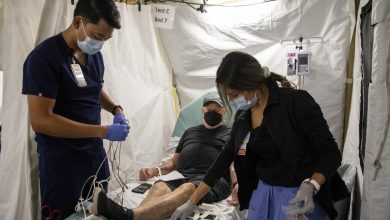Sleep Disorders Has an Impact Negatively on Driving Safety

Driving is a difficult task. It requires different cognitive, perceptual as well as motor skills. The driver must monitor and control the vehicle’s position in order to keep it safe. For this surveillance, there are two tasks: responding to curvature and controlling the lane position. Driving requires a split attention task, which includes speed control and lane control as well as monitoring. This requires attention and alertness. OSAHS (obstructive and/or hypopnea syndrome) and other sleep disorders might make it more difficult to drive safely.
You will experience a lot more uncertainty in your sleep. This could be due to the difficulty in estimating how much drowsiness contributes to crashes. Drowsiness can also cause crashes. It makes drivers less attentive, and reduces performance. Subjects don’t necessarily have to be asleep to cause an incident. There is no objective way to measure sleepiness/fatigue and determine if the crash was caused. “Fall resting accidents” have the following characteristics:
Problems may arise in the middle or late night of the afternoon
- Severe injuries
- One-vehicle traffic is left behind
- The crash happens on a fast street.
- The driver is not trying to avoid a collision.
- Safety when you have sleep disorders
Sleep disorders are neurological conditions that cause excessive sleepiness and disrupt the normal circadian rhythm. They also interfere with daytime function. This will enable us to study sleep disorders such a shift work sleep disorder and narcolepsy.
Narcolepsy
Narcolepsy patients experience excessive daytime sleepiness, cataplexy (i.e. sudden loss in muscle control and movement ability), and uncontrollable sleeping patterns at all hours of the day. Narcolepsy affects 0.03-0.16% of the general population. Participants with Narcolepsy had a higher rate of accidents and were more likely than others to have difficulty in simulators. Due to their sleepiness, patients suffering from narcolepsy also experienced higher crash rates. This was 11x higher for female narcoleptics and 7x for male narcoleptics compared with controls. Due to the limitations of current research and small sample sizes, it is vital that we continue our research.
The Modvigil 200 is prescribed to patients with narcolepsy. It affects neurotransmitters in the brain and can increase your ability to wake up.
Sleep apnea
Sleep apnea refers to a series or episodes where the upper airway becomes blocked while you sleep. It can lead to decreased blood oxygen, excessive daytime sleepiness and impaired attention and vigilance. Sleep apnea (most common in Western countries) is more common in males (3-7%) and females (2-5%) in Western nations. Most people in middle age are affected. It is more common in middle-aged people. Both epidemiological and simulator studies have shown that drivers with sleep apnea are more at risk of being in crashes. People suffering from sleep panic have lower driving performances than those who don’t suffer from it. It is not clear if patients with sleep apnea have different driving experiences to those who are healthy.
The oral medication Modalert can be safely used to treat sleep apnea. Modalert can be used in millions around the world with minor side effects, such as dizziness, nausea, headaches, and nausea. Modalert 200 should not be taken more than once daily.
Insomnia
A strict diagnosis can cause insomnia, a common sleep disorder, that affects around 6 percent of the population. It can make it difficult to fall asleep or get into sleep. Insomnia in women is twice as common as in men. A large-scale study found that insomniacs not treated had a higher risk of being injured (OR = 1.87) than other insomniacs. A large-scale review of cognitive dysfunctions found that insomniacs performed poorly in attention and vigilance tasks.
Shift work sleep disorder
SWSD is common but not often recognized. This occurs because of misalignment in sleep and wake patterns as well as the endogenous circadian rhythm. The irregularity in circadian rhythms could be caused by frequent night shifts, or early morning shifts. The American Academy of Sleep Medicine reports that SWSD affects nearly 2 percent of Americans. While gender distributions aren’t known, certain occupations (e.g. Shift work disorder affects nurses more than other occupations (e.g. Cross-sectional research among female nurses found that accidents involving vehicles were 2.24x more common in night shift nurses than in day shift nurses. Most road accidents involve rotators. Shift work has a negative effect on road safety, according to self-reports as well as surveys.
Restless legs syndrome/Willis-Eskom disease
RLS/Willis Eskom disease (WED), often associated with chronic sleeping loss, is characterized by an irresistible urge of movement in the lower extremities. This can occur before or after the onset of sleep. The prevalence of RLS/WED is not known. According to the literature, it affects 2.5 to 15% of people. RLS/WED is more common among middle-aged and elderly people than it is in women. RLS/WED may be a factor in motor vehicle accident deaths, but research is still limited.




